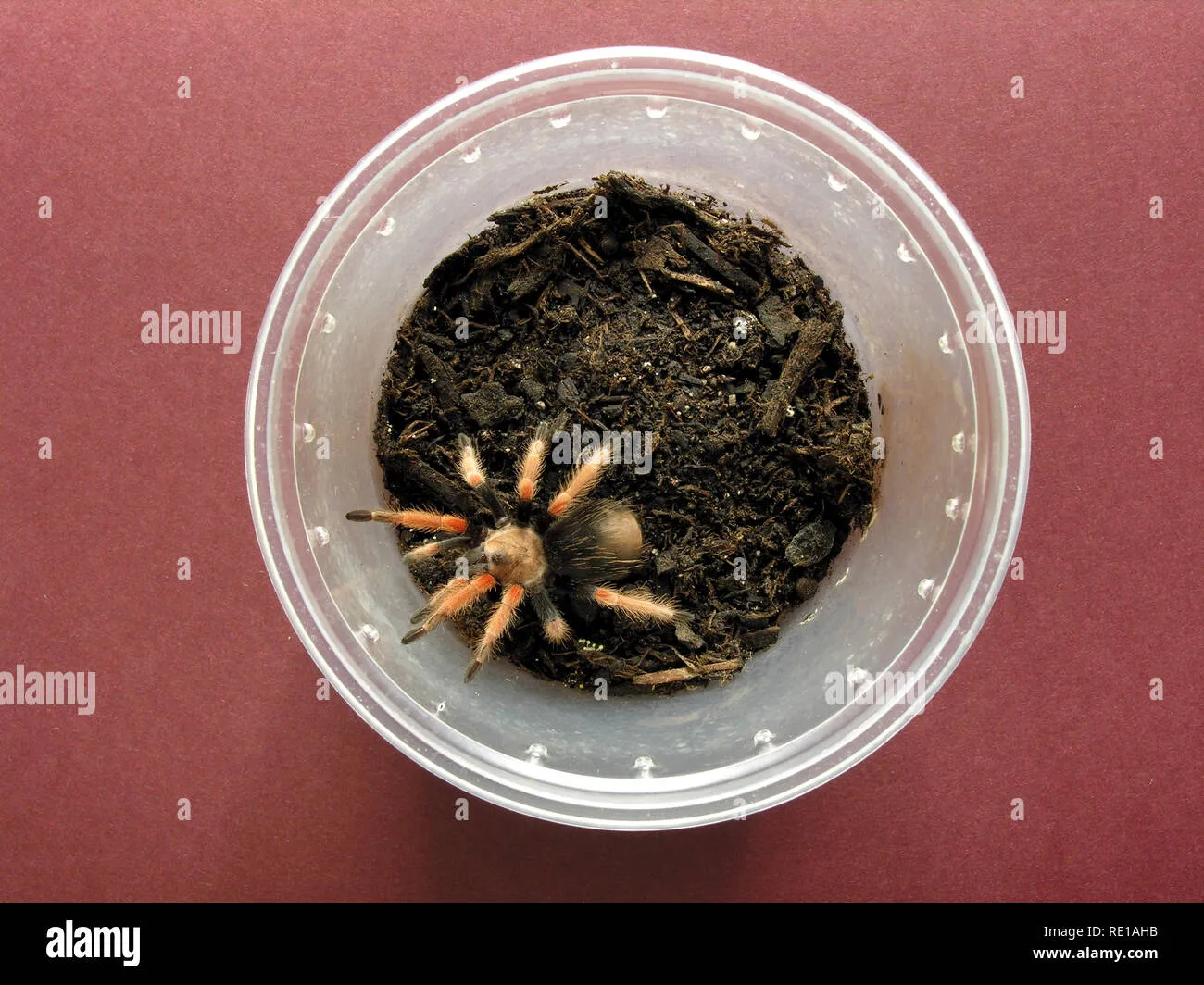Understanding the Tarantula Fireleg (Brachypelma boehmei)
The Tarantula Fireleg, scientifically known as Brachypelma boehmei, is a captivating species that has become increasingly popular among tarantula enthusiasts. Known for its striking coloration and relatively docile temperament, this species presents a rewarding experience for both novice and experienced keepers. This comprehensive guide will delve into the essential aspects of caring for a Tarantula Fireleg, providing you with the knowledge and insights needed to ensure your pet thrives. From setting up their enclosure to understanding their behavior, this guide will cover everything you need to know to provide the best possible care for your new companion.
What is a Tarantula Fireleg
The Tarantula Fireleg is a terrestrial tarantula species native to the Pacific coast of Mexico. Its vibrant colors, featuring a black body and fiery orange-red legs, are the source of its common name. These tarantulas are known for their relatively calm disposition, making them a good choice for beginners. However, it is important to always handle them with care and respect their space. The Fireleg is a medium-sized tarantula, typically reaching a leg span of up to 6 inches, with females generally larger than males. Their beauty and manageable size contribute to their appeal as pets, but responsible ownership is paramount for their well-being.
Origin and Natural Habitat of the Tarantula Fireleg
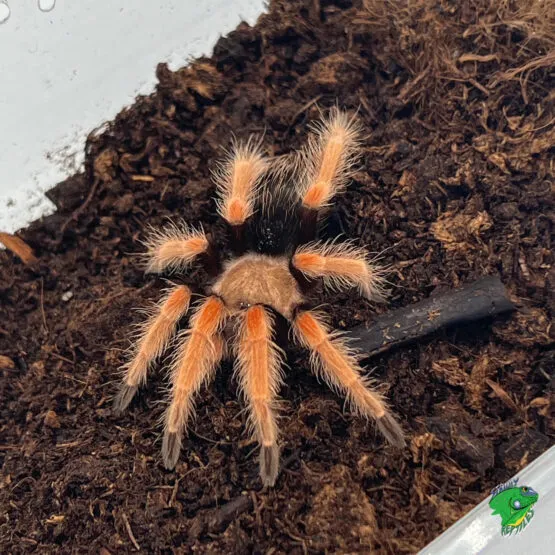
In their natural habitat, Tarantula Firelegs are found in the tropical forests of Mexico. They typically inhabit burrows in the ground or under rocks and logs. The climate in these regions is characterized by warm temperatures and moderate humidity, which are critical factors for their survival. Understanding their natural environment is crucial for replicating these conditions in captivity. This knowledge helps in creating an appropriate enclosure that meets their needs. Mimicking their natural habitat will reduce stress and promote healthy growth and development, allowing you to create a thriving environment for your Tarantula Fireleg.
Setting Up Your Tarantula Fireleg Enclosure
Creating a suitable enclosure is one of the most critical aspects of Tarantula Fireleg care. The right setup provides a secure and comfortable environment that meets all their needs. It should mimic their natural habitat, providing both security and the necessary environmental conditions to thrive. Proper enclosure setup ensures your pet is healthy and displays its best behaviors. Here’s a comprehensive guide to setting up a proper enclosure for your Tarantula Fireleg.
Choosing the Right Enclosure Size
The size of the enclosure is crucial for the well-being of your Tarantula Fireleg. As a general rule, the enclosure should be at least three times the tarantula’s leg span in width and length. For juveniles, a smaller enclosure is preferable, as it makes it easier for them to find food and feel secure. An adult Fireleg will require a larger enclosure to allow ample space for movement and burrowing. A well-sized enclosure will help your tarantula feel safe and prevent stress, allowing it to thrive in captivity. Always consider the eventual size of your tarantula when selecting the enclosure.
Substrate Selection for Your Tarantula Fireleg
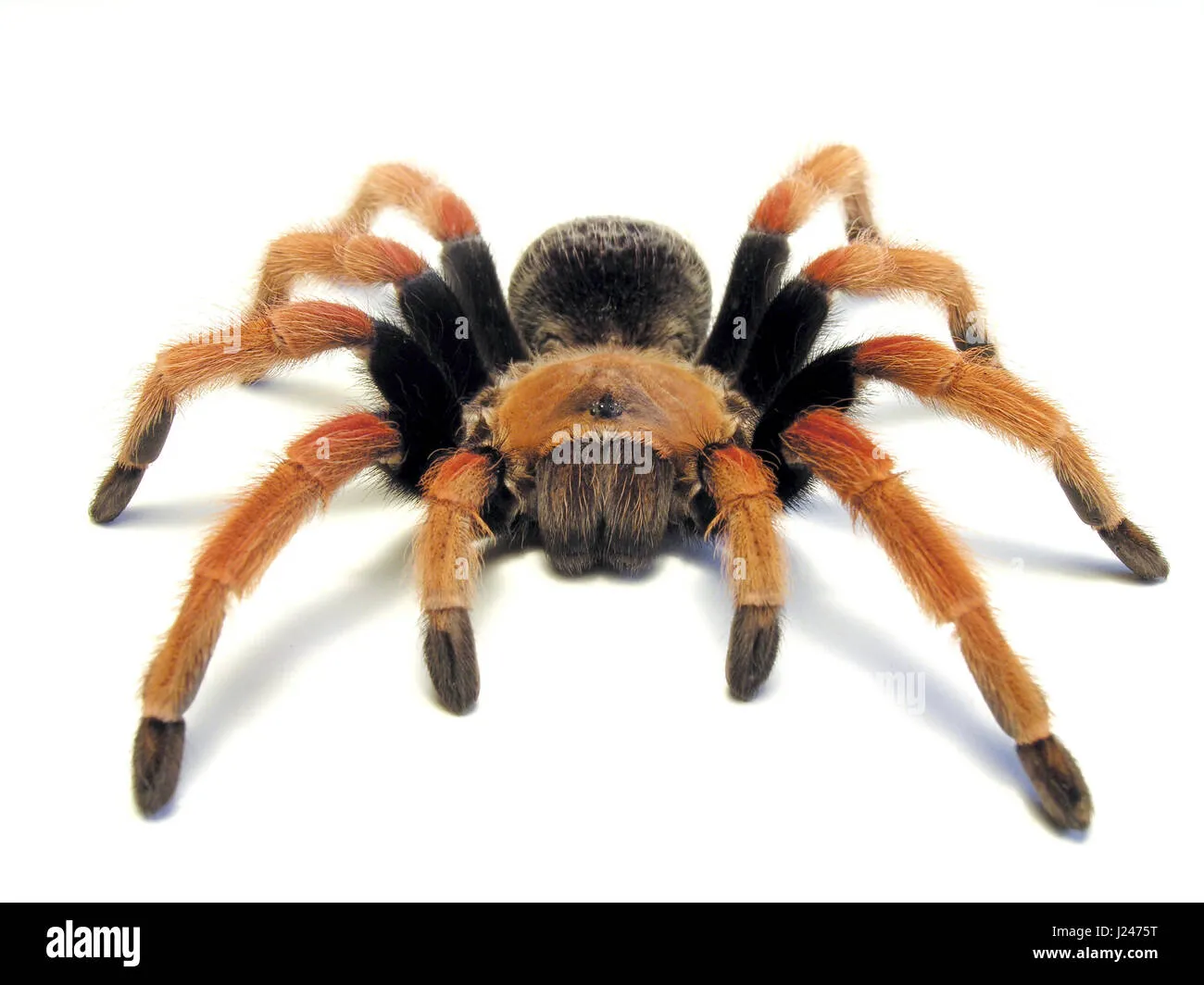
The substrate in your enclosure serves multiple purposes: it provides a surface for the tarantula to walk on, helps to maintain humidity, and allows them to burrow, which is a natural behavior. Ideal substrates include a mix of coconut fiber, peat moss, and a small amount of vermiculite. This blend retains moisture well and is safe for your tarantula. The substrate should be deep enough for the tarantula to burrow comfortably, typically several inches deep. Regularly check and replace the substrate to prevent the growth of mold and bacteria.
Essential Enclosure Furnishings for Tarantula Firelegs
Providing appropriate furnishings within the enclosure enhances the tarantula’s well-being. These furnishings should simulate their natural environment. Include a shallow water dish, which is crucial for providing a constant supply of fresh water. Add a hide, such as a piece of cork bark or a half-log, to offer a place for the tarantula to retreat and feel secure. Artificial or live plants can also be added to provide cover and help maintain humidity. Make sure all furnishings are stable and safe, and won’t collapse on the tarantula.
Temperature and Humidity Control
Maintaining the correct temperature and humidity levels is essential for the health of your Tarantula Fireleg. The ideal temperature range is between 75-85°F (24-29°C). You can use a heat mat or a ceramic heat emitter to maintain this temperature. Humidity should be kept between 60-70%. You can monitor the humidity levels using a hygrometer. Misting the enclosure lightly with water every few days, depending on the ventilation, or using a larger water dish can help maintain proper humidity. Ensure good ventilation to prevent mold growth.
Feeding Your Tarantula Fireleg
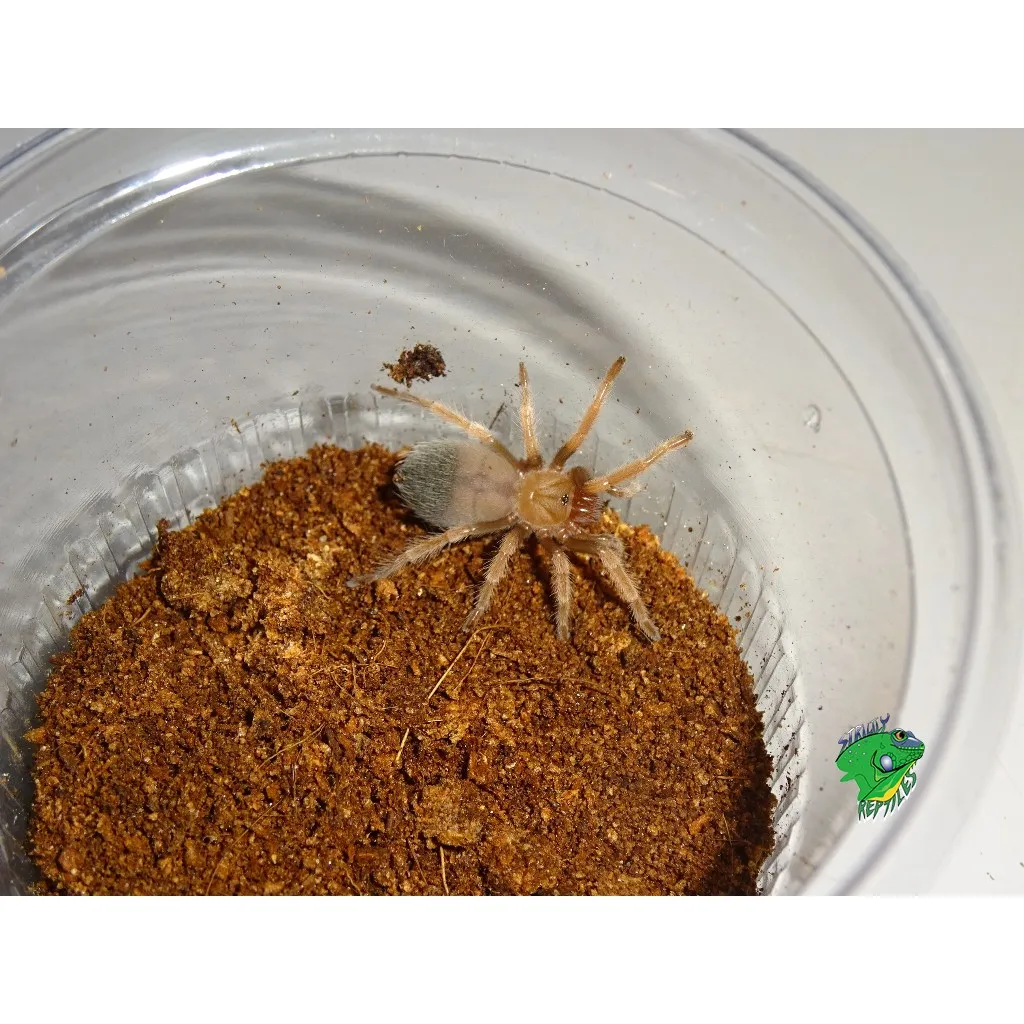
Proper feeding is crucial for the health and growth of your Tarantula Fireleg. Providing the correct diet and feeding schedule will help them thrive. Ensure you are providing the right foods in the right amounts, as well as a regular supply of fresh water. Understanding these requirements will help keep your tarantula healthy and active.
What to Feed Your Tarantula Fireleg
Tarantula Firelegs are insectivores, meaning their diet consists primarily of insects. Suitable feeder insects include crickets, mealworms, roaches, and appropriately sized waxworms. The size of the insects you feed should be proportionate to the size of your tarantula; the prey should not be larger than the tarantula’s body. Variety in the diet is beneficial. Offer a mix of different insects to ensure they get a range of nutrients. Always ensure that the feeder insects are gut-loaded with nutritious food before feeding them to your tarantula. This enriches the nutritional value of the prey.
Feeding Frequency and Amount
The feeding frequency depends on the age and growth stage of your tarantula. Spiderlings and juveniles should be fed more frequently, around every 2-3 days. Adult tarantulas can be fed less frequently, typically once a week or every other week. Adjust the feeding schedule according to your tarantula’s appetite and growth rate. Always remove any uneaten prey within 24 hours to prevent stress. Overfeeding can lead to obesity, while underfeeding can stunt growth. Monitor your tarantula’s abdomen; a plump abdomen is a sign of a well-fed tarantula.
Watering and Hydration
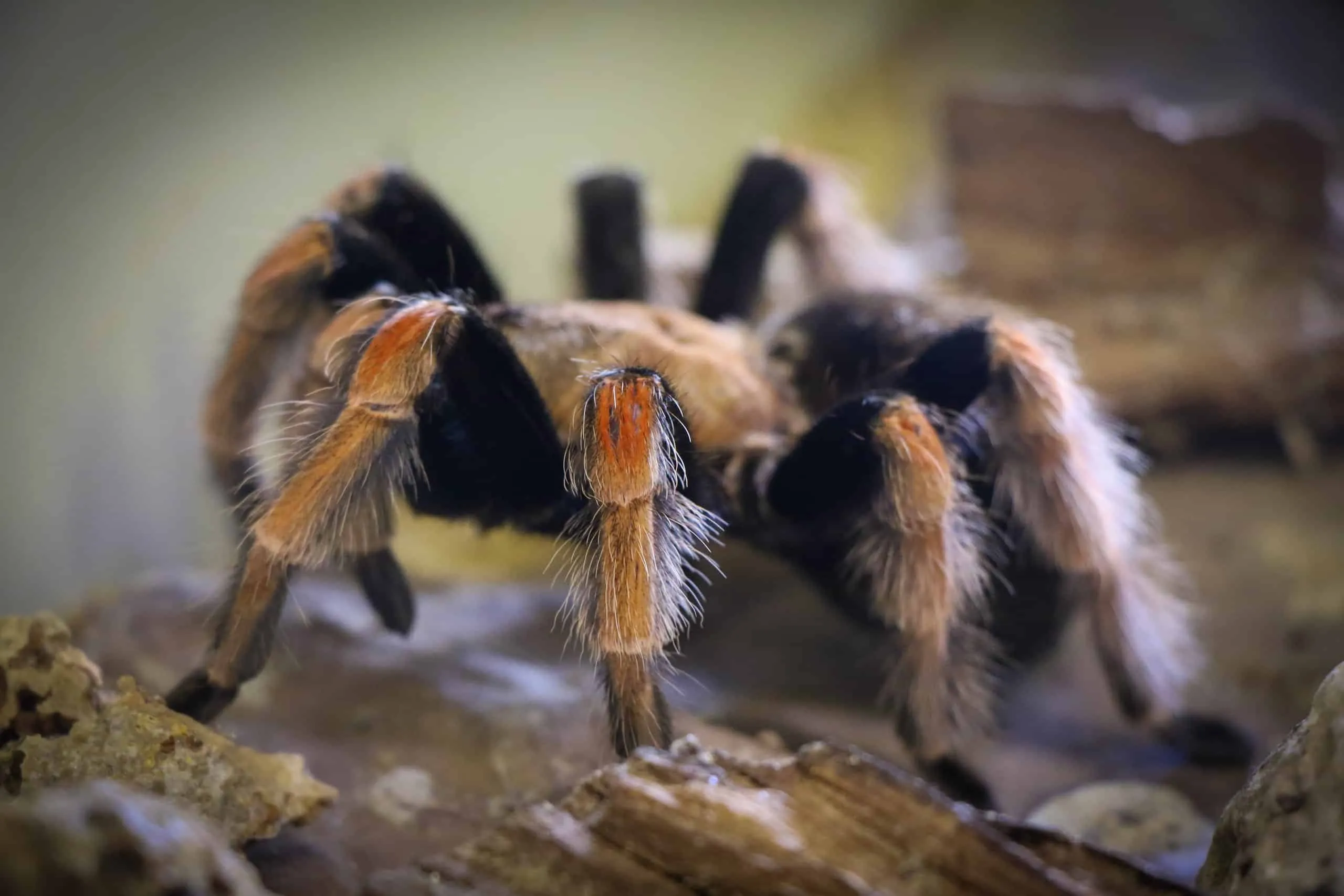
Providing a constant supply of fresh water is essential for the health of your Tarantula Fireleg. Use a shallow water dish in the enclosure, and regularly check and refill it with clean water. Avoid using tap water, as it may contain chlorine or other chemicals that can be harmful. If you use tap water, allow it to sit for 24 hours to let the chlorine evaporate, or use bottled or spring water. Misting the enclosure can also provide additional hydration, especially during molting. Ensure the enclosure has good ventilation to prevent the growth of mold.
Handling and Safety Precautions
While Tarantula Firelegs are generally considered docile, it’s important to handle them with care and respect their space. Their safety, as well as yours, should be your top priority. It is crucial to understand the proper techniques and precautions when handling a Tarantula Fireleg. Responsible handling practices ensure both the well-being of the tarantula and your safety.
When to Handle Your Tarantula Fireleg
It’s best to avoid handling your Tarantula Fireleg unless absolutely necessary. Handling can cause stress to the tarantula, and if stressed, they may exhibit defensive behaviors like flicking urticating hairs or biting. Only handle your tarantula if it is necessary, for example, for enclosure maintenance or health checks. Observe your tarantula’s behavior and mood before handling. If it appears stressed, leave it alone. Frequent handling is not recommended. Observe and interact with your pet without direct contact whenever possible.
Safe Handling Techniques
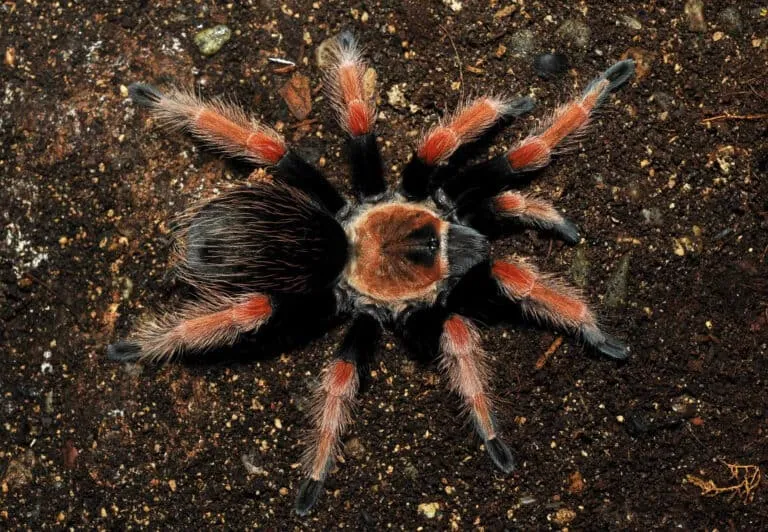
If you must handle your tarantula, do so carefully. Approach your tarantula slowly and gently. Encourage it to walk onto your hand rather than trying to grab it. Always support the tarantula’s body and avoid sudden movements. Keep your hands close to a soft surface, like a table or bed, to prevent injury if it falls. Wash your hands thoroughly before and after handling to prevent the spread of bacteria. Avoid handling your tarantula if you have applied lotion or other products to your hands.
Recognizing and Addressing Potential Health Issues
Keeping an eye out for signs of illness or stress is vital to maintaining a healthy Tarantula Fireleg. Common health issues can affect their well-being. Recognizing these signs and addressing them promptly can often prevent serious complications. Familiarize yourself with the common issues, and consult with a veterinarian specializing in exotic animals if you have any concerns. Early detection and treatment are essential for a long and healthy life for your tarantula.
Common Health Problems in Tarantula Firelegs
Some common health issues that can affect Tarantula Firelegs include parasitic infections, fungal infections, and injuries. Signs of illness can include lethargy, loss of appetite, unusual posture, and changes in behavior. Always monitor your tarantula for any of these signs. Check the enclosure for any environmental issues that might be contributing to health problems. If you observe any symptoms, consult with an experienced veterinarian or a tarantula specialist promptly. Regular observation will help you recognize potential problems early and ensure your tarantula receives the care it needs.
Molting Process and What to Expect
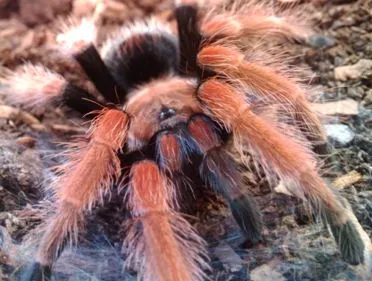
Molting is a natural process in tarantulas, where they shed their exoskeleton to grow. During molting, the tarantula will typically stop eating and may appear lethargic. They will often flip onto their backs, a posture that can be alarming for new keepers. Do not disturb the tarantula during this process. Provide a humid environment to help with the molting process. Once the molting is complete, the tarantula’s new exoskeleton will be soft, and they will be vulnerable. Wait a few days before feeding your tarantula again after molting to allow the new exoskeleton to harden fully. Molting is an essential part of their life cycle; a healthy tarantula will molt regularly.
Preventative Care and Maintenance
Preventative care is essential for maintaining the health and well-being of your Tarantula Fireleg. Regular cleaning and maintenance of the enclosure are crucial. Remove any uneaten food and waste promptly. Replace the substrate periodically, based on the tarantula’s age and the substrate type, to prevent the buildup of bacteria. Monitor the temperature and humidity levels regularly. Maintain a consistent feeding schedule and provide fresh water at all times. Regular observation of your tarantula’s behavior and appearance will also help you to detect any early signs of illness. Proper preventative care helps ensure a long and healthy life for your Tarantula Fireleg.
Tarantula Fireleg Lifespan and Growth
The lifespan of a Tarantula Fireleg varies depending on its sex and care. Females generally live longer than males, typically up to 20 years in captivity, while males usually live for 5-7 years. Their growth rate also depends on several factors, including feeding, temperature, and genetics. Tarantulas molt periodically as they grow, shedding their exoskeleton. During the molting process, they shed their outer layer and grow. Providing appropriate care, including proper diet, temperature, and humidity, will help your Tarantula Fireleg grow at a healthy pace and live to its full potential. Regular molting indicates a growing and healthy tarantula.
Understanding Tarantula Fireleg Behavior
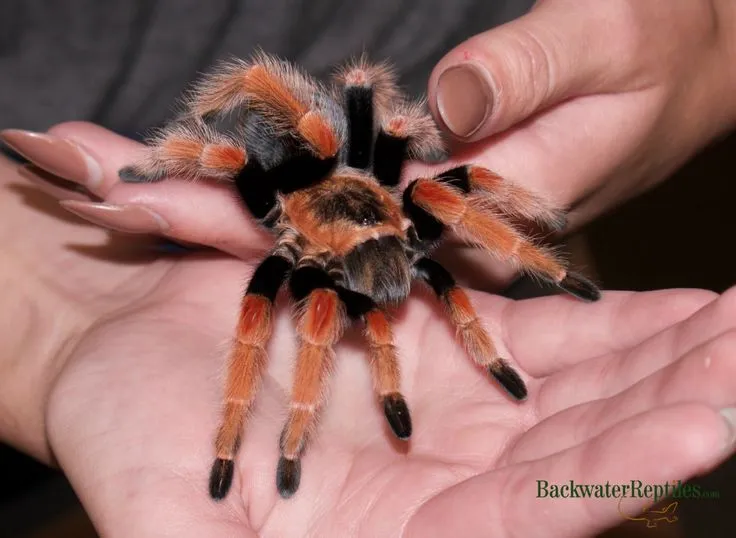
Understanding the behavior of your Tarantula Fireleg is crucial for providing proper care and ensuring a positive experience. Knowing their temperament and recognizing signs of stress will allow you to create an environment where your tarantula can thrive. Paying attention to their actions can help you better understand their needs and address any issues that may arise. Understanding their behavior ensures both your and the tarantula’s safety and well-being.
Temperament and Characteristics
Tarantula Firelegs are known for their relatively docile temperament, making them a popular choice for beginners. However, they can still exhibit defensive behaviors when threatened, such as flicking urticating hairs from their abdomen or, very rarely, biting. They are generally not aggressive and prefer to retreat to a burrow or hide. They are mostly nocturnal and are often most active at night. By understanding their natural behavior, you can create an environment where they feel safe and comfortable. Regularly observe their behavior to develop a deeper understanding of your tarantula.
Signs of Stress and How to Manage It
Recognizing signs of stress in your Tarantula Fireleg is essential for its well-being. Signs of stress can include refusing food, excessive hiding, flicking urticating hairs, or an agitated demeanor. Stress can be caused by various factors, including improper enclosure conditions, handling, or loud noises. To manage stress, ensure that the enclosure conditions are optimal and provide a secure hide. Avoid unnecessary handling and provide a quiet environment. Regular monitoring will help you detect any stress early. Addressing stress factors will help your tarantula feel safe and secure.
Final Thoughts on Tarantula Fireleg Care
Caring for a Tarantula Fireleg can be a rewarding experience for any pet owner. Providing proper care, including appropriate enclosure setup, diet, and handling, can help ensure your tarantula lives a long and healthy life. By understanding their specific needs and behavior, you can create an environment where your Tarantula Fireleg can thrive. Remember to always prioritize their safety and well-being. This guide has provided you with the essential information to start or continue your journey with these fascinating creatures.
